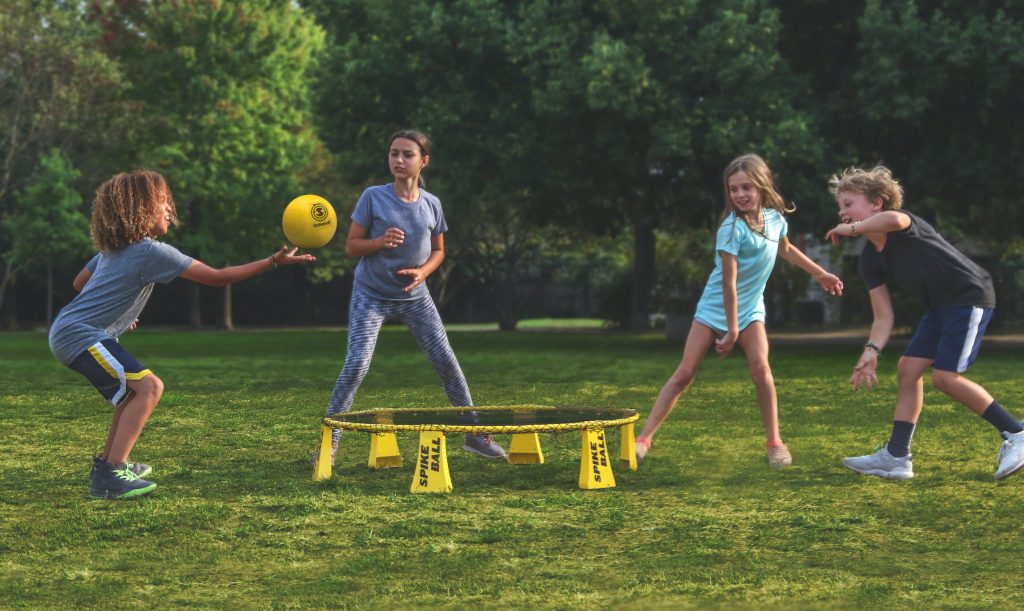Today we’re going through some tips on how to make sure that the kids enjoy your historical fencing classes while learning.
Most kids do sports at some point. In fact, if you leave kids on their own, they’ll probably come up with a way to compete and call it a game. Throw kids a ball and they’ll play ball. No ball? They’ll run and try to catch each other. And if you give them sticks they will fence. So how in the name of Liechtenauer do adults manage to mess it up? Why do some kids leave your classes even though they were so enthusiastic about it before actually starting to train?
The simple reason for why kids lose interest is that training in your class isn’t fun or rewarding. So how can you change that and make sure that kids stay active and keep training?

Make sure they fit in
It’s easy to think that the main reason a kid feels he or she doesn’t fit in is that the other kids are mean, but that’s not what we’re talking about here. If there’s bullying, it needs to be addressed, but most of the time it’s something much simpler. Some of the most common reasons are that the group has too big age gaps, or that the student is the only girl or boy in the class. Things like that are perfectly fine for some kids but will make many feel like they are on their own, especially before they get settled in.
This is why many sports divide groups based on age and sex. Especially the latter has very little to do with actual physical differences at younger ages, since boys and girls are very similar before puberty in their physical development. There are some studies that show that girls mature a bit earlier in terms of fine motor skills, but other studies show that boys develop fine motor skills earlier. Regardless, these physical differences are small. But for most kids, around the age of five or so, they start identifying clearly that boys and girls are different and some feel awkward if they are the only boy or girl in the class. This is something to consider and it can be approached in different ways, like advertising to get more girls through the door (assuming that historical fencing tends to attract more boys) or invite them to take a friend with them. Make sure they feel that they are a part of the group and keep an extra eye on them if it turns out to be an issue. If you are getting a lot of girls through the door, but they don’t stick around, you may want to consider having separate boys and girl classes. Frankly, it shouldn’t be necessary in most cases, but it’s an idea that might be worth considering if the problem persists.
Around that start of school age, a lot of other things happen as well. Kids between 6-9 years old are lingering between being a young child and being a slightly older child. The development differences can also be huge in these ages, and there are often big differences even between kids who are born early in the year and those born late in the year. One way of handling this is to have smaller steps between age groups, like one group for 8-9-year-olds, one for 9-10-year-olds and one for 10-12-year-olds for example, and calling them something like green, blue and orange groups to avoid setting hard age limits. Also, make individual evaluations between moving a kid up from one group to another. And also not to separate kids who rely on each other for support. That means that you need to be attentive and really know the children.

Be fair, consistent and worthy of their trust
Kids are often highly aware of inconsistent or unfair behaviour from adults and other kids. As the leader, you need to make sure that you treat them equally and fairly and that they can trust you. By being a truly good example and someone they feel is safe and reliable, you are much more likely to keep them in class and to also be a positive role model.
Ask yourself these questions: If you say something, will you follow up on it? If you make promises, will you keep them? Do you set a good example and act in the same way as how you tell them to act? Do you say the same things to different individuals and over time?
If you are answering these things with a yes, you are most likely doing things right. Congratulations!

Make it playful
I’m not saying that the kids should play freely, but just as kids naturally will play, training can be playful. By gamifying drills, for example, it will be much easier to get them to pay attention and enjoy training. Take the example of footwork, which can be tedious. Just practising forwards and backwards in unison is not likely to get a class excited, so why not make them collect balls on the other side of the hall only using fencing footwork? And whichever team has the most balls at the end, wins. Then it’s much more likely they will find it fun and since you’ve divided them into groups, they get comfort in numbers. Another fun game is to throw a ball over the head of the child, and when they see it they should try to strike it with the sword. You can also use balloons which they need to thrust at with their hands and make them come over from one side of the hall to the other without letting it fall to the ground, again, using correct footwork. These types of games make them forget that they are training and instead they’ll focus on playing the game.

Make it structured
This might sound like the opposite of playful, but they are not mutually exclusive. Quite the opposite. Fun games for kids are orderly or they risk to quickly get out of hand. One of the key aspects is to break things up once in a while to reset the situations and calm things down, or training can deteriorate. Remember, that although children may appear to be enjoying themselves in a chaotic environment, they have an accute sense of things being out of control that will make them feel unsecure and unfocused.
Kids also need time to reflect, cool off, drink water and relax, but they often lack the self-control to manage that themselves when playing. How often you should take breaks depend on age and exercises. Keep in mind that as the instructor, how you talk and behave will affect how the children feel and behave, and how safe they feel in approaching you if there’s a problem. A good lesson plan will involve calm introductions and breaks in between a few exercises, games and sparring.

Let them see their progression
It’s part of human psychology that we measure ourselves against each other, not against where we ourselves started off. It’s also true that we enjoy what we are good at. So if you’re a kid and feel like you are being outperformed, you may find it hard to enjoy practise even as you are developing. As an instructor, you should make sure to acknowledge the individuals on their own terms and see them. Keep notes on how they improve and tell them about their new skills so that they have things to be proud of.
Another thing to consider is to set up goals to strive for. It can be ranks or diplomas, or merit badges. If done right, they are attainable but still meaningful for the children.

Talk so that kids understand
Give a lot of praise to kids; they need it for guidance. For the same reason, avoid telling them what not to do and instead focus on what they should do. That’s how you positively change behaviour. When you give praise or feedback, avoid the word “but” since it gives mixed signals. Instead of saying: “You did great, but you can improve your footwork.” Say: “You did great, and if you get that sidestepping in a bit more, you will do even better.”
Another thing is that kids tend to get bored when they feel that they don’t understand. If you overload them with information or give them technical terms, you risk losing their attention quickly. Simplify your language and portion out instructions in smaller bits. And if you are using a technical term, make sure to explain it in a way that a kid can understand. “A zornhow is a diagonal cut towards the head” might fly with adults, but “Cut him in the head like this. It’s called a zornhau” is more appropriate for children. If the kids are very young, it might also be good to make them say it out loud. Frankly, there’s no real need to teach younger kids any difficult terms, that can come later.
To summarize; let kids be kids
All of this comes down to the simple idea that you must meet the kids where they are and on their terms in order for them to learn. As the instructor, it’s your job to make sure that they get out what they need from training.
In a time with increasing health problems among children relating to obesity stemming from inactivity and unhealthy food, it’s a win if you can get one more kid to stick with it and become healthier. Be the hero they need in their lives.





